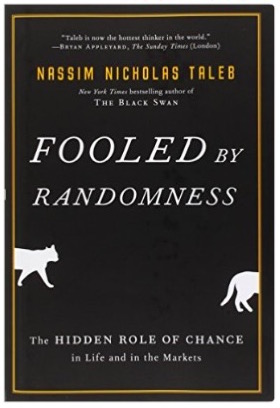
I started writing a piece about ‘antifragility’ in technical and organizational management, and it kept leaking out into the territory occupied by Boyd, Habermas, and Rittel/Webber.
In 1973, Horst Rittel and Mel Webber wrote “Dilemmas in a General Theory of Planning,” a monograph that introduced the concept of ‘wicked problems.’ Disclaimer: I studied under Rittel at UC Berkeley in the late ‘70s.
Also in 1973, Jurgen Habermas published his seminal book “Legitimation Crisis” in Germany (an English edition came out in 1975).
In 1978, Col. John Boyd first presented his famous briefing “Patterns of Conflict.”
 And in 2012, Nassim Taleb published “Antifragile: Things That Gain from Disorder
And in 2012, Nassim Taleb published “Antifragile: Things That Gain from Disorder
,” a prescriptive book based on his earlier work in “Fooled by Randomness: The Hidden Role of Chance in Life and in the Markets” and “The Black Swan: Second Edition: The Impact of the Highly Improbable: With a new section: “On Robustness and Fragility”
.”
Over the next week or so I want to try and stand up an outline of what I’m thinking here and see if the basic ideas that came out of my rereading these books stand up at all.
Here’s my elevator summary of four fairly complex and deep works.
Rittel/Weber
Planning, as it has been practiced since the war, is running into resistance both because the structures of social and political power have corroded and because planning itself hasn’t shown itself to be up to the task of nontrivial problems. The answer? Decisions that maximize choice, praxis in the form of dialog among stakeholders and in the form of doing work in the world and monitoring how it actually behaves.
Habermas
Societies depend, in large part, on ‘legitimacy’; this is the social cohesion that underpins the administrative laws and structure that govern behavior. Without legitimacy, the administrative state finds it increasingly difficult to manage the behavior of its citizens. Modern mass capitalist societies, in Habermas’ view consume their legitimacy, meaning that although they increasingly provide for their citizens materially, the social underpinnings are eroded through mass alienation, etc. Habermas sees legitimacy as a necessary precursor to authority, and suggests a series of mechanisms to restore it. They all center on ‘communicative action’ which requires some form of consensus building and deliberation that ensures that stakeholders feel they have been heard.
Boyd
Success in military conflict comes from the ability to (among other things) rapidly adapt to changing conditions and a close ability to monitor the outcomes of those adaptations while concealing the outcomes from your opponent. Leadership in this context comes from real two-way communication and diffusion of authority to the edges.
Taleb
Taleb argues that we can differentiate between ‘fragile’ ‘robust’ and ‘antifragile’ things (organisms, objects, organizations); All are subject to shocks in the form of stresses; fragile things break; robust things resist; antifragile things get stronger in the face of these. In human culture, antifragility comes from insightful judgement which must be proved against possible loss – i.e. you have to bet and risk loss.
For myself, I became interested in Agile as a technology methodology in the early 2000’s after much of a decade spent rescuing failed technology projects. I received my CSM certificate in 2005, and began leading projects in Scrum and Scrum-like formats, with pretty significant success.
As my career advanced, I began to look at coarser- and coarser-grained views of the organization: Project > Program > Portfolio > Enterprise and began to see breaks between highly effective technical teams that functioned at the project or even program level, and a series of morasses at the higher levels. Upper management necessarily focused on its own pressures and problems as a result has a hard time creating, maintaining, and harnessing the sparks of energy created during the brief life of the high-performance teams.
What I want to explore in the next few posts are some ideas about how and why we might solve those problems, and break down the management obstacles to high performance.
I think there may be something interesting in applying these left-field authors to the problem.


